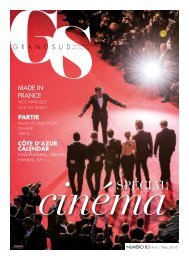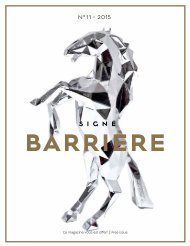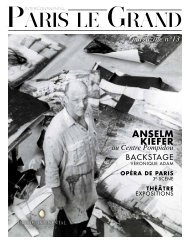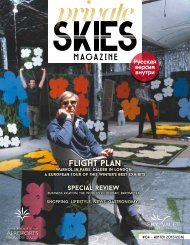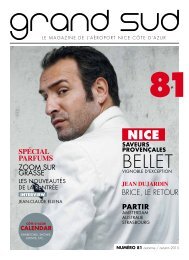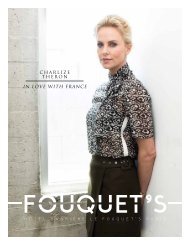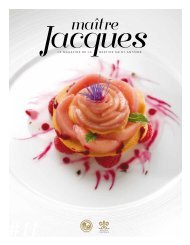Paris WorldWide #9
- No tags were found...
Create successful ePaper yourself
Turn your PDF publications into a flip-book with our unique Google optimized e-Paper software.
carnet d’adresses address book<br />
• Boire et manger Eat and drink<br />
Marcel<br />
1, villa Léandre, <strong>Paris</strong> 18 e (01 46 06 04 04, restaurantmarcel.fr).<br />
• Dormir Sleep<br />
La Chambre d’hôte de <strong>Paris</strong><br />
6, villa Daviel, <strong>Paris</strong> 13 e (01 45 65 91 09, chambredhotedeparis.com).<br />
• écouter, voir Listen, see<br />
Le Studio de l’Ermitage<br />
8, rue de l’Ermitage, <strong>Paris</strong> 20 e (01 44 62 02 86, studio-ermitage.com).<br />
En haut et en bas,<br />
la villa de l’Ermitage<br />
abrite de nombreux<br />
ateliers d’artistes<br />
(<strong>Paris</strong> 20 e ).<br />
Top and bottom, the<br />
Villa de l’Hermitage<br />
houses many artists’<br />
studios (<strong>Paris</strong> 20th).<br />
mansions’ splendour is visible<br />
from the adjoining Rue Poussin or<br />
along the Petite Ceinture. In the<br />
16th arrondissement, starting at<br />
the Villa Beauséjour and its cabins<br />
at Hameau Boileau, all the islets<br />
of elite society are barricaded. To<br />
see anything of these mansions<br />
means heading to <strong>Paris</strong>’s north,<br />
in Montmartre. With pediments<br />
of white or red brick adorned with<br />
bow windows and vines, Villa<br />
Léandre conveys the feeling of<br />
a quaint English cottage. These<br />
terraced houses in the Art Nouveau<br />
style have housed the same<br />
families for generations.<br />
COLLECTIVELY BUILT,<br />
LIVING ALONE<br />
A similar atmosphere prevails<br />
at Villa Daviel. At the foot of the<br />
Butte-aux-Cailles, among the<br />
street-art frescoes, this alley’s<br />
houses groan under wisteria<br />
vines and seem stifled by the tall<br />
buildings of the 13th arrondissement.<br />
Cottage-like, these houses<br />
recall a time when the dream of<br />
a having a home in central <strong>Paris</strong><br />
passed from the bourgeoisie to<br />
the working class. Construction<br />
cooperatives, created in the early<br />
20th century, assembled workers,<br />
artisans and foremen to build<br />
the Mouzaïa neighborhood; the<br />
Hameau du Danube, just beyond<br />
the Buttes-Chaumont; and<br />
the Campagne à <strong>Paris</strong> at Porte<br />
de Bagnolet, a coveted housing<br />
estate of 93 stone houses. But<br />
the most original experiment<br />
played out on the other side of<br />
Rue Daviel. In front of the villa,<br />
a charming porch topped by a<br />
sloping roof and framed by two<br />
half-timbered facades draws the<br />
eye. Past the blue wooden gate<br />
lies the Petite Alsace, where 40<br />
pavilions are arranged around a<br />
central tree-lined square. In 1912,<br />
Abbot Viollet, a proponent of social<br />
Catholicism, commissioned<br />
architect John Walter to design<br />
the project. A native of France’s<br />
Jura region, Walter, following the<br />
English model, designed a garden<br />
city unique in France.<br />
126 - paris Worldwide septembre/octobre<br />
september/october 2015




